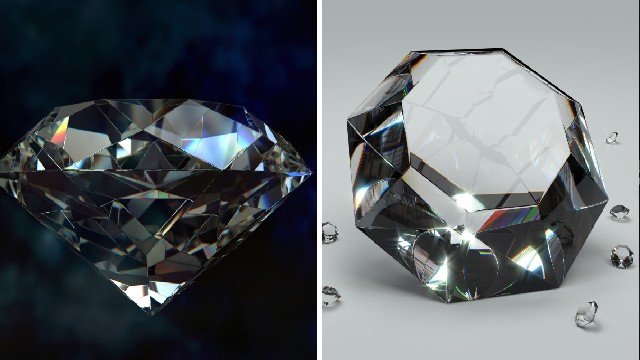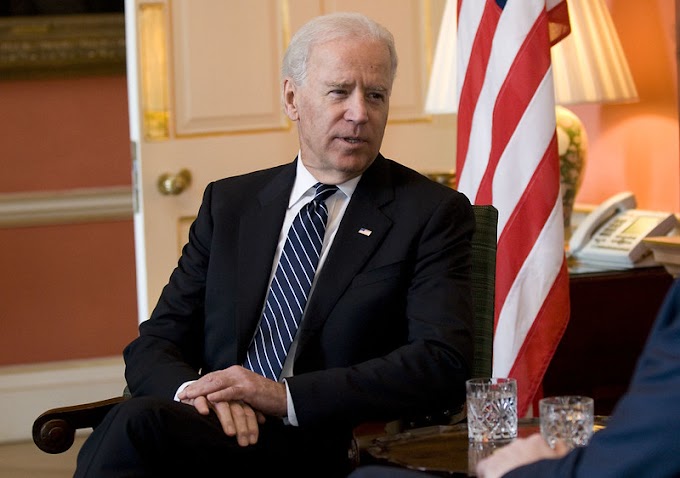World's most famous diamond, Koh-I-Noor
Koh-I-Noor the story of the world's most famous diamond, which includes omens. This event is dated March 29, 1849. Ten-year-old Maharaja Dilip Singh was brought to Sheesh Mahal in the middle of the fort. The boy's father, Maharaja Ranjit Singh, had died a decade ago. His mother, Rani Jindan Kaur, was forcibly relocated to another palace outside the city.
The British in red overcoats and hats had formed a circle around Dilip Singh. Shortly afterward, in a public ceremony, he signed the document, which the British government had been waiting for years, in front of the remaining chiefs of his court.
Shortly afterward, the pure Sikh flag was lowered from the Lahore fort and replaced by the striped flag of East India Company. At the same time, not only did the East India Company gain control of the vast Sikh empire, but they also acquired the world's most famous diamond, the Koh-I-Noor.
Six myths related to diamonds
Asp Laila: The horse of Ranjit Singh which was dressed as Koh-I-Noor East India Company which ruled over a region-year-old Dilip Singh with a diamond.A diamond the size of a small chicken egg
Koh-I-Noor is said to have been pulled out of the eye of an idol by the Turks in a temple in southern India. The first official mention of Koh-I-Noor was made by the Persian historian Muhammad Marvi following Nadir Shah's invasion of India in 1750, says William Dillermple, author of the book Koh-I-Noor, The Story of the World's Most Famous Diamond. Marvin writes that he saw Koh-I-Noor with his own eyes.
He was then attached to the upper part of the Peacock Throne which Nadir Shah had taken from Delhi and taken to Iran. Koh-I-Noor was the equivalent of a chicken egg, and it was said that it could be sold to feed people all over the world for two and a half days.
The Peacock Throne cost twice as much as the Taj Mahal. Koh-I-Noor was later removed from the throne so that Nadir Shah could tie it to his arm.
Nadir Shah carried out a massacre in Delhi
Well-known historians Sir HM Elliott and John Dawson writes in their book, The History of India as Told by Its Own Historians: 'As soon as Nadir Shah's 40,000 troops entered Delhi, food prices skyrocketed. Arrived When Nadir Shah's soldiers started weighing, the shopkeepers clashed and the people started attacking the soldiers.
By noon, 900 Persian soldiers had been killed. Nadir Shah then ordered the massacre of the population of Delhi. The massacre began at nine o'clock in the morning. Most of the people killed near Red Fort, Jama Masjid, Dariba, and Chandni Chowk. A total of 30,000 people were killed.
Another historian, William Flour, writes in his book, The New Facts of the Rare Shadow India Campaign: Both his hands were tied behind his back with his turban. He knelt before them and said that instead of taking revenge on the people of Delhi, take revenge on them.
Nadir Shah stopped the massacre on the condition that he be given PRs 100 crore before leaving Delhi. Over the next few days, Nizam-ul-Mulk returned to his own capital and paid the money. In short, in an instant, someone else became the owner of the wealth accumulated by the Mughals for 250 years. Nadir Shah captured Delhi in 1739, Getting Koh-I-Noor by changing Nadir Shah's turban
William Dalrymple and Anita Annand have worked hard to learn the history of Koh-I-Noor. Says Dealermple: 'I started my research by talking to Mughal jeweler experts. Most of them were of the opinion that the general statements about the history of Koh-I-Noor were not correct. It was only after visiting Nadir Shah that Koh-I-Noor first gained public attention.
Theo Metcalfe writes that Noor Bai, a court dancer, informed Nadir Shah that Muhammad Shah had hidden Koh-I-Noor in his turban. Hearing this, Nadir Shah asked Muhammad Shah to exchange his turbans for the sake of friendship.
Thus Koh-I-Noor came into the hands of Nadir Shah. When they first saw Koh-I-Noor, they just stared. They named it Koh-I-Noor, the mountain of light.
Historian Anya Annand
The Persian historian Muhammad Kazim Marvi, in his book 'Alam Arai Nadri', has written in a very interesting way about taking the looting of Delhi to Afghanistan. Marvi writes: 'After staying in Delhi for 57 days, Nadir Shah returned to his country on 16 May 1739. They took with them all the wealth of the Mughals accumulated over the centuries. Their biggest loot was the Peacock Throne, in which the rubies of Koh-I-Noor and Timur were encrusted.
All the looted treasures were loaded on 700 elephants, 400 camels, and 17,000 horses and taken to Iran. When the entire army crossed the Chenab Bridge, every soldier was searched. Many soldiers buried the diamonds for fear of being confiscated. Some people threw them into the river in the hope that they would come back later and pick them up.
Koh-I-Noor reached Maharaja Ranjit Singh in 1813
Koh-I-Noor could not stay with Nadir Shah for long. After his assassination, the diamond fell into the hands of his Afghan bodyguard, Ahmad Shah Abdali, and in 1813, through several hands, reached Maharaja Ranjit Singh. It is mentioned in the documents in the National Archives of India.
Maharaja Ranjit Singh
Maharaja Ranjit Singh used to tie it on his arm on the occasion of Dussehra, Diwali, and other major festivals. Whenever a British officer came to his court, he was especially shown this diamond. Whenever he visited Multan, Peshawar, or other cities, Koh-I-Noor would be with him.
Koh-I-Noor fell to the British in the Anglo-Sikh War
Ranjit Singh died in 1839. In 1843, after a fierce struggle for power, five-year-old Dilip Singh was made king of the Punjab. But after the British victory in the Second Anglo-Sikh War, both their kingdom and Koh-I-Noor were captured by the British. Dilip Singh was separated from his mother and sent to Fatehgarh Fort to live with a British couple.
Lord Dalhousie himself came to Lahore to take Koh-I-Noor. The diamond was taken out of the closet and placed in Dalhousie's hands. It weighed 190.3 carats at the time. Lord Dalhousie decided to send Koh-I-Noor to Queen Victoria by ship 'Media'. The plane encountered many difficulties on the way. Koh-I-Noor was with Shah Shuja before Ranjit Singh
Koh-I-Noor ship in trouble
Anita Annand, the co-author of Koh-I-Noor, The Story of the World's Most Infamous Diamond, says: have been. There was no problem for a week or two after the media ship left for England, but then some people got sick and cholera spread on the ship. The captain told his crew not to worry because Mauritius was coming.
There we will get medicine and food and everything will be fine. But the ship was about to reach Mauritius when the news of the sick people on board reached the people there. They threatened to blow up the ship if it came close to their shores.
The crew was struggling with the cholera epidemic and hoped to make it to England somehow. On the way, they encountered a violent storm that broke the ship in two. When they arrived in England, they found out that they had brought the Koh-I-Noor diamond with them and that was probably why they had so much trouble.
Unprecedented reception of Koh-I-Noor in London
"When people arrived at the entrance of the exhibition, people had to queue for hours to enter. The diamond became a symbol of British power in the East and also reflected the growing influence of British military power.
Meanwhile, Maharaja Dilip Singh, residing at Fatehgarh Fort expressed his desire to go to London to meet Queen Victoria. The queen also agreed. At the same place, Dilip Singh presented the Koh-I-Noor diamond to Queen Victoria. "Queen Victoria has always felt bad about how her government treated a child," says Anita Anand.
The crown is encrusted with the Koh-I-Noor diamond in Britain
"She loved Dilip Singh dearly, so she was angry with him. Although Koh-I-Noor had reached them two years ago, they had not yet worn it in public. He wondered what Dilip would think of him if he saw them doing so.
In those days, the French jeweler Venter halter was a famous painter. The queen asked him to take a picture of Dilip Singh which she wanted to put in her palace. While Dilip Singh was painting his portrait on the stage in the white drawing room of Buckingham Palace, the queen called a soldier and asked him to bring a box containing Koh-I-Noor.
"I want to show you something," he told Dilip Singh. As soon as Dilip Singh saw him, he took Koh-I-Noor in his hands. He took her to the window and saw her in the light. By this time, the mountain had changed shape and was cut off.
This was no longer the Koh-I-Noor that Dilip Singh wore as the Maharaja of Punjab. After seeing Koh-I-Noor for a while, Dilip Singh said to the Queen, "Your Majesty, it is a great honor for me to give you this diamond as a gift." Queen Victoria took the diamond from him and continued to wear it until her death.
Dilip Singh's mother Jindan Kaur
Dilip Singh arrived in India to visit his mother, Despite being very dear to Queen Victoria, a few years later, Dilip Singh expressed his desire to go to India to meet his real mother, Jindan Kaur. The British government allowed him to go to India. Jindan was living in Nepal at the time. He was brought to Calcutta to meet his son. Anita Anand said: 'Dilip was already there. Rani Jindan Kaur was brought before them. Jindan said she would never leave him.
"Wherever they go, they will go with them. By this time Jindan had lost his sight. When she touched Dilip Singh's head, she was shocked that his hair had been cut. They screamed in frustration. At the same time, some Sikh soldiers were returning from China after taking part in the Opium War.
When she found out that Jindan had reached Calcutta, she reached outside the Spence Hotel where Jindan was meeting her son Dilip. He started shouting loudly, "Say So Nihal, Sat Sri Akal." Fearing them, the British put the mother and son on a ship and sent them to England.
Dilip Singh angry with Queen Victoria
Dilip Singh gradually turned against Queen Victoria. They began to feel that they had been treated unfairly. It also crossed his mind that he would regain his kingdom. He left for India but could not go beyond Aden.
He was arrested along with his family in Port Said on April 21, 1886. They were later released but everything was taken away. His body was found on October 21, 1893, in a very modest hotel in Paris. No one in the house was with him at the time. With him, the family of Maharaja Ranjit Singh came to an end forever.
After Queen Victoria, her son King Edward VIII
did not crown Koh-I-Noor. But his wife, Queen Alexandra, gave him a
place in her crown. A superstition spread with Koh-I-Noor that whoever
touched it would perish. But women had no problem wearing it.
Later, Princess Mary, the wife of the future King George V, also crowned him. But after that, Queen Elizabeth II did not place Koh-I-Noor in her crown. Today, the world's most famous diamond is housed in the Jewel House of the Tower of London.







